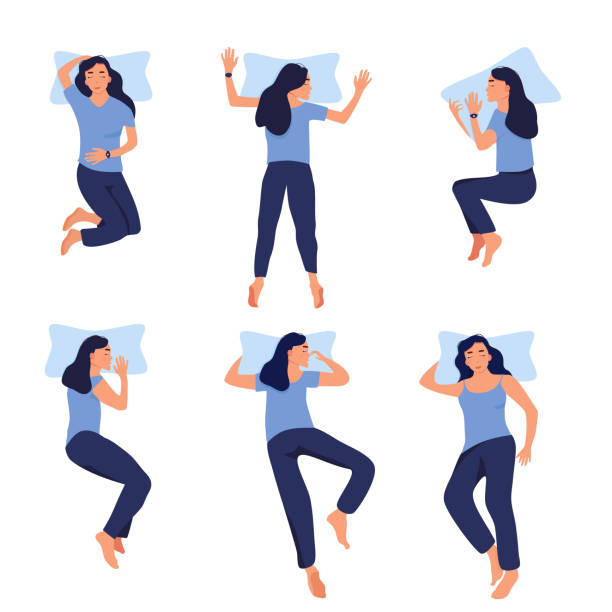Table of Contents
ToggleAre you struggling to get a good night’s sleep? Do you wake up feeling tired and achy, no matter how many hours of sleep you get? Your sleep position could be the culprit. The position you sleep in can have a significant impact on your quality of sleep, as well as your overall health. In this article, we’ll explore the different sleep positions, the pros and cons of each, and how to choose the best one for a good night’s rest.
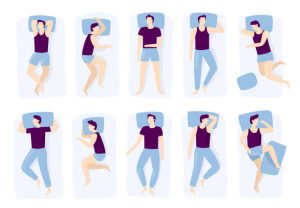
Sleeping Positions and Their Effects on Body Alignment and Breathing
The position in which we sleep has a significant impact on our body’s alignment and breathing. It is crucial to understand the effects of different sleeping positions to choose the one that works best for our body.
Back Sleeping: The Best Sleeping Position for Spinal Alignment
Sleeping on your back is generally considered the best sleeping position for spinal alignment. It allows your head, neck, and spine to rest in a neutral position, reducing the risk of back and neck pain. It can worsen snoring and sleep apnea for some people.
Back Sleepers Sleeping on your back is considered to be one of the best sleep positions for overall health. It helps keep your head, neck, and spine aligned, reducing the risk of developing back and neck pain. It’s also a great position for reducing acid reflux and minimizing wrinkles. It’s not recommended for those who snore or suffer from sleep apnea, as it can exacerbate these conditions.
Benefits of Back Sleeping
Back sleeping, also known as supine sleeping, is considered to be one of the healthiest sleeping positions. This position is associated with several benefits, including reduced risk of acid reflux, reduced wrinkles, and reduced back and neck pain. Sleeping on your back helps to keep your spine, neck, and head in a neutral position, which can alleviate pressure on these areas and prevent discomfort. Back sleeping is believed to help prevent snoring and sleep apnea.
Tips for Improving Back Sleeping Position
If you are a back sleeper, there are several tips you can follow to improve your sleeping position. One important tip is to use a supportive pillow that cradles your neck and keeps your head in a neutral position. It’s also important to use a firm mattress that supports your body and keeps your spine in alignment. You can also try placing a pillow under your knees to relieve pressure on your lower back.
Risks and Precautions of Back Sleeping
While back sleeping has several benefits, there are also some risks and precautions to be aware of. One risk of back sleeping is the potential for sleep-related breathing disorders, such as sleep apnea. This occurs when the airway becomes obstructed during sleep, which can cause pauses in breathing and loud snoring.
Some people may experience discomfort or pain in their lower back or hips when sleeping on their back. It’s important to be mindful of your body and adjust your sleeping position as needed to prevent discomfort.
Side Sleeping: A Good Option for Better Breathing and Digestion
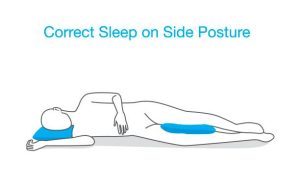
Sleeping on your side is also a good option as it improves breathing and digestion. It can also reduce snoring and sleep apnea. It can cause pressure points on the hips, shoulders, and knees if you sleep on one side for an extended period.
Side Sleepers Side sleeping is the most popular sleep position, with about 74% of people sleeping in this position. Sleeping on your side can help reduce snoring and sleep apnea, as it keeps your airways open. It’s also great for reducing acid reflux, improving circulation, and reducing the risk of developing wrinkles. Side sleeping can put pressure on your shoulders and hips, causing pain and discomfort.
Benefits of Side Sleeping
Side sleeping offers several benefits for the body. It can reduce the risk of snoring and sleep apnea, improve digestion, and alleviate back pain. Side sleeping can help improve circulation, reduce acid reflux symptoms, and improve brain function. By sleeping on your side, you can promote better overall health and wellness.
Tips for Improving the Side Sleeping Position
To improve the side sleeping position, it is important to ensure that the spine is aligned properly. One way to achieve this is by using a pillow that is the correct height and firmness to support the neck and keep the head in a neutral position. Placing a pillow between the knees can also help reduce pressure on the hips and lower back.
It is important to avoid sleeping on your arm or shoulder, which can cause pain and discomfort. By following these tips, you can make the side sleeping position more comfortable and effective.
Risks and Precautions of Side Sleeping
While side sleeping offers many benefits, there are also some risks and precautions to consider. Sleeping on the same side every night can lead to wrinkles and skin damage, particularly on the face and chest. To prevent this, alternate sides or consider investing in a satin or silk pillowcase that is gentle on the skin. Side sleeping can put pressure on the shoulder and hip, which can cause pain or discomfort. To prevent this, switch sides throughout the night or consider using a body pillow for extra support.
Lastly, pregnant women should avoid sleeping on their backs and should instead sleep on their sides, specifically on their left side, to improve blood flow to the baby. By being aware of these risks and taking proper precautions, you can continue to enjoy the benefits of side sleeping while staying safe and comfortable.
Stomach Sleeping: The Worst Sleeping Position for Spinal Alignment and Breathing
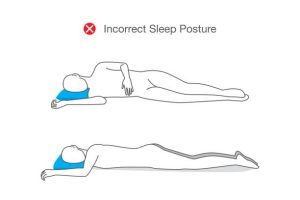
Sleeping on your stomach is generally considered the worst sleeping position for spinal alignment and breathing. It puts a strain on your neck and spine and can cause neck and back pain. It also restricts breathing, making it difficult to get enough oxygen.
Stomach Sleepers Sleeping on your stomach is not recommended, as it puts pressure on your neck and spine. This can lead to pain and discomfort, as well as headaches and numbness. It’s also not a good position for reducing snoring or sleep apnea. Some people find it comfortable and have trouble sleeping in other positions. If you’re a stomach sleeper, try placing a pillow under your hips to reduce pressure on your spine.
Benefits of Stomach Sleeping
Stomach sleeping can have its benefits, including reducing snoring and sleep apnea, aiding digestion, and reducing acid reflux. It is important to be mindful of the potential risks and take necessary precautions to avoid negative consequences.
Tips for Improving the Stomach Sleeping Position
To improve the position and reduce the risks associated with stomach sleeping, there are several tips to consider. Using a thin or no pillow to avoid excessive pressure on the neck, placing a pillow under the hips to reduce strain on the lower back, and using a soft and breathable pillowcase to prevent skin irritation are all helpful. Maintaining good posture during the day is also important, as poor posture can exacerbate the negative effects of stomach sleeping.
Risks and Precautions of Stomach Sleeping
While stomach sleeping can be beneficial for some people, there are also risks and precautions associated with the position. These include numbness and tingling in the arms and hands due to pressure on the nerves, muscle imbalances, and strain, and the potential for wrinkles and sagging skin. It is recommended to alternate sleeping positions and avoid sleeping on the stomach for extended periods to reduce the risks.
The Role of Pressure Points in Sleeping Positions
Pressure points are areas of the body where the weight is concentrated when we sleep. When pressure is applied to these points for an extended period, it can cause discomfort and pain. Different sleeping positions can cause pressure points on different parts of the body, leading to discomfort and pain.
Choosing the Right Sleeping Position for Better Sleep and Health
Choosing the right sleeping position is crucial for getting a good night’s sleep and maintaining overall health. It is essential to consider the alignment of the body, breathing, and pressure points when choosing a sleeping position. With the right sleeping position, you can wake up feeling rested and rejuvenated, ready to tackle the day ahead.
Combination Sleepers Many people switch between different sleep positions throughout the night. While this can be comfortable, it can also make it difficult to get a good night’s sleep. If you’re a combination sleeper, try to stick to one position for as long as possible to help improve the quality of your sleep.
How to Choose the Best Sleep Position Choosing the best sleep position depends on a variety of factors, including your personal preferences, medical conditions, and sleep quality. Here are some tips to help you choose the best sleep position for a good night’s rest:
- If you suffer from back pain, try sleeping on your back with a pillow under your knees to reduce pressure on your spine.
- If you snore or suffer from sleep apnea, try sleeping on your side with a pillow between your knees to help keep your airways open.
- If you suffer from acid reflux, try sleeping on your left side to help reduce symptoms.
- If you’re pregnant, try sleeping on your left side to improve circulation to your baby and reduce the risk of developing high blood pressure.
- If you’re a combination sleeper, try to stick to one position for as long as possible to improve the quality of your sleep.
Factors That Can Affect Sleep Quality
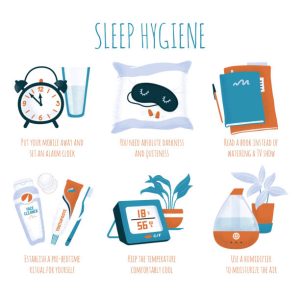
Several factors can affect sleep quality, and these factors can vary from person to person. Here are some of the external factors that can impact the quality of sleep:
Mattress and Pillow Quality
The quality of the mattress and pillow can play a crucial role in determining the comfort level and support of the body. A mattress and pillow that are too firm or too soft can cause discomfort, leading to a restless night’s sleep. Investing in a good quality mattress and pillow can improve sleep quality.
Room Temperature and Lighting
The room temperature and lighting can also impact sleep quality. A room that is too hot or too cold can cause discomfort and disrupt sleep, while too much light or too little light can affect the body’s natural circadian rhythm. Adjusting the room temperature and lighting to the desired level can create a conducive sleep environment.
Noise Level and Distractions
Noise level and distractions can also be significant factors that can affect sleep quality. Loud noise, such as traffic or construction noise, can disturb sleep, while distractions, such as electronic devices, can prevent the mind from relaxing and cause difficulties in falling asleep. Minimizing noise levels and distractions can improve sleep quality.
Improving Sleep Quality
To improve sleep quality, it is essential to address these external factors and create a comfortable and conducive sleep environment. Creating a relaxing pre-sleep routine, such as reading a book or taking a warm bath, can also help the body relax and prepare for sleep. By addressing these external factors and adopting healthy sleep habits, individuals can improve their chances of getting a good night’s sleep and waking up feeling rested and refreshed.
How Sleep Positions Affect Snoring
Sleep position can play a crucial role in determining whether or not you snore during the night. Snoring is caused by the vibration of tissues in the throat due to the narrowing of the airway. This narrowing can be caused by a variety of factors, including sleep position. When you sleep on your back, gravity pulls your tongue and soft tissues toward the back of your throat, obstructing the airway and causing snoring.

